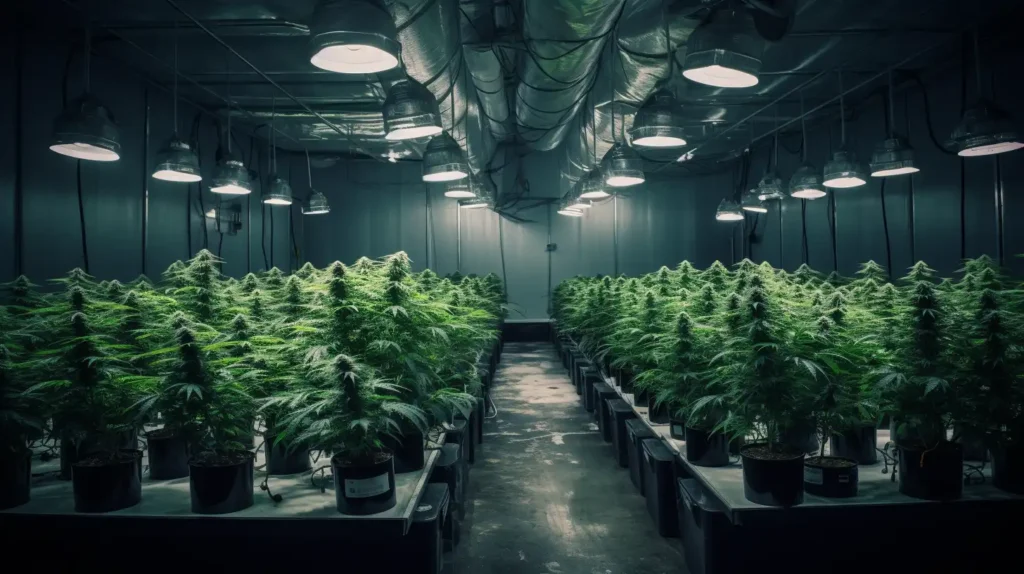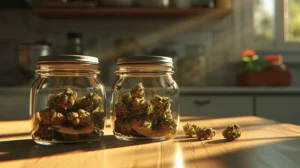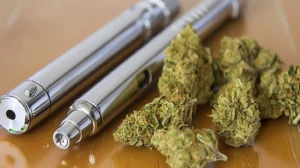Introduction to Ventilation
Proper ventilation is crucial for the success and safety of a home cannabis grow room. As a professional and trustworthy expert in health and safety, I would like to highlight the importance of proper ventilation in a home cannabis grow room and guide you on how to set it up.
There are several reasons why ventilation is essential in a home cannabis grow room, including:
- Prevents Mold and Mildew Growth: A lack of proper ventilation can lead to a buildup of moisture in the grow room, creating a suitable environment for mold and mildew to grow. This can not only damage your plants but also pose a health risk for you as a grower.
- Regulates Temperature and Humidity: Proper ventilation helps maintain the ideal temperature and humidity levels in the grow room, which are crucial for the growth and development of cannabis plants.
- Controls Odour and Air Quality: The pungent smell of cannabis can be a concern for many growers. Proper ventilation helps to control the odour and improve the air quality in the grow room.
However, poor ventilation in a home cannabis grow room can lead to various risks, including:
- Health Hazards for Growers: Mold, mildew, and other harmful bacteria can grow in a poorly ventilated grow room, posing a risk to the health of growers. Inhaling these contaminants can cause respiratory issues and other health problems.
- Reduced Yield and Quality of Plants: Without proper ventilation, plants may not receive enough fresh air and carbon dioxide, resulting in stunted growth and reduced yield. Poor air circulation can also lead to pests and diseases.
- Fire Hazard: In a tightly sealed grow room, heat and moisture can build up, leading to a fire hazard. This risk can be significantly reduced with proper ventilation.
To set up proper ventilation in your home cannabis grow room, follow these steps:
- Determine the Size and Layout of Your Grow Room: The size and layout of your grow room will determine the type and size of ventilation system you need. Consider factors such as the number of plants, the size of the space, and the location of windows and doors.
- Choose the Right Ventilation System: There are various ventilation systems available, such as exhaust fans, intake fans, and air ducts. Consider the size and layout of your grow room, as well as your budget, to choose the most suitable system.
- Install Intake and Exhaust Fans: Intake fans bring fresh air into the grow room, while exhaust fans remove stale air and control temperature and humidity levels. Install these fans strategically to ensure proper air circulation.
- Use Carbon Filters to Control Odour: To reduce the strong smell of cannabis, use carbon filters with your exhaust fan to trap odour particles.
- Monitor and Adjust the Ventilation System: Regularly check the temperature and humidity levels in your grow room and make adjustments to your ventilation system if needed.
Tips for maintaining proper ventilation in a home cannabis grow room include:
- Clean and Maintain Your Ventilation System Regularly: Regularly clean and maintain your ventilation system to prevent the buildup of dust, debris, and other contaminants that can affect its efficiency.
- Keep a Close Eye on Temperature and Humidity Levels: Use a thermometer and hygrometer to monitor the temperature and humidity levels in your grow room. Make adjustments to your ventilation system if necessary.
- Use Proper Air Circulation Techniques: Ensure that your plants have proper air circulation by using oscillating fans or by positioning fans strategically in the grow room.
- Consider Using a Dehumidifier or Humidifier: Depending on your location and climate, you may need to use a dehumidifier or humidifier to maintain the ideal humidity levels in your grow room.
In conclusion, proper ventilation is crucial for a successful and safe home cannabis grow room. By following these guidelines and tips, you can ensure that your plants receive the necessary fresh air, maintain optimal temperature and humidity levels, and prevent any potential hazards.
Key Points:
Proper ventilation in a home cannabis grow room is crucial for preventing mold and mildew growth, regulating temperature and humidity, and controlling odour and air quality. Poor ventilation can lead to health hazards, reduced plant yield and quality, and even fire hazards in a home cannabis grow room. Setting up proper ventilation involves determining the size and layout of the room, choosing the right system, installing fans and carbon filters, and regularly monitoring and maintaining the system.
Why Proper Ventilation is Important in a Home Cannabis Grow Room?
When it comes to successfully growing cannabis at home, proper ventilation is crucial. Not only does it help maintain a healthy environment for your plants, but it also plays a vital role in the overall yield and quality of your harvest. In this section, we will discuss the importance of proper ventilation in a home cannabis grow room and how it can prevent the growth of mold and mildew, regulate temperature and humidity levels, and control odour and air quality. These are all essential factors in creating an ideal environment for your cannabis plants to thrive.
Prevents Mold and Mildew Growth
Ensure proper air circulation to prevent mold and mildew growth in a home cannabis grow room.
Regularly inspect the grow room for any signs of mold or mildew.
Maintain optimal temperature and humidity levels to deter mold and mildew.
Utilise ventilation systems with HEPA filters to trap mold spores and prevent their circulation.
Implement cleanliness protocols to minimise the risk of mold and mildew.
Regulates Temperature and Humidity
To regulate temperature and humidity in a home cannabis grow room, follow these steps:
- Determine the ideal temperature and humidity levels for cannabis cultivation.
- Select a ventilation system suitable for the size and layout of your grow room.
- Install intake and exhaust fans to facilitate air circulation and regulate temperature.
- Utilize carbon filters to control odours and enhance air quality.
- Regularly monitor and adjust the ventilation system to maintain optimal temperature and humidity.
For a successful and safe home cannabis grow room, it’s crucial to prioritize proper ventilation. By regulating temperature and humidity, you can create an environment conducive to healthy plant growth and mitigate the risk of mould, mildew, and other potential hazards.
Controls Odour and Air Quality
Proper ventilation in a home cannabis grow room is crucial for controlling odour and maintaining air quality. The right ventilation system, including intake and exhaust fans, along with carbon filters, helps to manage the strong odour produced by cannabis plants, ensuring a more pleasant environment. Additionally, it aids in regulating air quality, preventing the accumulation of harmful gases and maintaining a suitable atmosphere for plant growth.
To enhance air quality further, regular monitoring and adjustment of the ventilation system are essential. Remember, maintaining a well-ventilated space not only controls odour but also creates a healthier environment, contributing to successful cannabis cultivation.
What Are the Risks of Poor Ventilation in a Home Cannabis Grow Room?
When it comes to growing cannabis at home, proper ventilation is crucial for a successful and safe harvest. In this section, we will discuss the potential risks of poor ventilation in a home cannabis grow room. From health hazards for the growers to reduced yield and quality of plants, and even the risk of fire, inadequate ventilation can have serious consequences. Let’s take a closer look at these risks and why it is essential to set up proper ventilation in your home cannabis grow room.
Health Hazards for Growers
Proper ventilation in a home cannabis grow room is crucial to mitigate health hazards for growers. Without adequate airflow, growers are at risk of exposure to mold spores, harmful gases, and other airborne contaminants. These can lead to respiratory issues, allergies, and in severe cases, chronic conditions. Additionally, poor ventilation can result in an uncomfortable working environment, potentially leading to stress and fatigue.
To ensure the safety and well-being of growers, implementing a well-designed ventilation system is imperative. This should include proper air filtration, regular monitoring of air quality, and the use of suitable protective gear when working in the grow room.
Reduced Yield and Quality of Plants
Proper ventilation in a home cannabis grow room is crucial to avoid reduced yield and quality of plants. Inadequate airflow can lead to stunted growth, nutrient deficiencies, and poor resin production.
To mitigate these risks, prioritize ventilation system setup, including intake and exhaust fans, and carbon filters to minimize odours and maintain air quality. Regularly clean and maintain the ventilation system, closely monitor temperature and humidity levels, and employ proper air circulation techniques. Additionally, consider using a dehumidifier or humidifier to regulate moisture levels.
By ensuring proper ventilation, growers can prevent heat buildup, remove stale air, and maintain optimal conditions for robust plant growth and high-quality yields.
Fire Hazard
In a home cannabis grow room, poor ventilation poses a significant fire hazard due to the increased risk of overheating and electrical malfunctions. Insufficient airflow can lead to the accumulation of heat and exacerbate the likelihood of electrical components, such as ballasts and lighting fixtures, malfunctioning and causing a fire. Additionally, when the air isn’t properly circulated, it can lead to a buildup of heat around the plants, especially near high-intensity lights, potentially igniting flammable materials.
To mitigate this risk, it’s crucial to ensure adequate ventilation, including the strategic placement of intake and exhaust fans, regular maintenance of electrical components, and monitoring of temperature levels. Implementing these precautions is vital for preventing fire hazards and ensuring the safety of the cannabis grow room.
How to Set Up Proper Ventilation in a Home Cannabis Grow Room?
Ventilation is a crucial aspect of a successful home cannabis grow room. Without proper air circulation, your plants can suffer from mould, pests, and other issues that can hinder their growth. In this section, we will discuss the key steps to setting up proper ventilation in your home cannabis grow room. From determining the size and layout of your grow room to installing intake and exhaust fans, we will cover all the necessary information to help you create an optimal environment for your plants to thrive.
Determine the Size and Layout of Your Grow Room
Measure the dimensions of your grow space to determine the available area for setting up your cannabis plants.
Consider the layout of the room and identify potential obstacles or areas that may require specific ventilation attention.
Take into account the positioning of doors, windows, and any existing ventilation systems when planning the layout of your grow room.
Assess the potential heat sources within the space and how they may impact the overall temperature and airflow.
Plan the placement of your cannabis plants to ensure they receive adequate ventilation and airflow throughout the grow room.
Pro-tip: Creating a detailed layout and ventilation plan for your grow room can significantly enhance the effectiveness of your ventilation system, leading to healthier and more productive cannabis plants.
Choose the Right Ventilation System
Assess the size and layout of your grow room to determine the proper ventilation system requirements. Research and select a ventilation system that aligns with the specific needs of your grow room, considering factors such as room size, number of plants, and environmental conditions.
Install intake and exhaust fans strategically to ensure optimal air circulation and ventilation within the grow room. Employ carbon filters to effectively control odours and maintain air quality. Regularly monitor and adjust the ventilation system to ensure it is functioning at its best capacity.
When choosing the right ventilation system for your home cannabis grow room, it’s essential to consider the specific requirements of your space and plants. Researching different ventilation systems and their features will help you make an informed decision to optimise air quality, temperature, and humidity levels for successful cannabis cultivation.
Install Intake and Exhaust Fans
When installing intake and exhaust fans in a home cannabis grow room, follow these essential steps:
- Positioning: Determine the optimal locations for intake and exhaust fans to ensure proper air circulation.
- Choose the Right Fans: Select fans that suit the size and layout of your grow room, providing sufficient airflow.
- Installation: Properly install intake and exhaust fans to maintain a balanced airflow and regulate temperature and humidity.
- Use of Filters: Incorporate appropriate filters to ensure the air entering and exiting the grow room is free from contaminants and odours.
- Monitoring: Regularly monitor the fans’ functionality and adjust as necessary to maintain an adequate ventilation system.
Fact: Effective ventilation can significantly reduce the risk of mould and mildew, creating a healthier environment for cannabis plants to thrive.
Use Carbon Filters to Control Odour
When setting up proper ventilation in a home cannabis grow room, using carbon filters to control odour is crucial. Here are the steps:
- Evaluate the size and layout of the grow room to determine the placement of carbon filters for maximum coverage.
- Choose high-quality carbon filters that suit the specific size and airflow requirements of the grow room.
- Install the carbon filters in the ventilation system, ensuring a secure and airtight connection to effectively trap odours.
- Regularly inspect and replace carbon filters as needed to maintain optimal odour control and ventilation efficiency.
A cannabis grower in a small apartment successfully managed odour concerns by diligently incorporating carbon filters into their ventilation system. This not only prevented any complaints from neighbours but also ensured a discreet and efficient home grow operation.
Monitor and Adjust the Ventilation System
When monitoring and adjusting the ventilation system in a home cannabis grow room, follow these essential steps:
- Regular Monitoring: Regularly check the temperature, humidity levels, and air circulation to ensure optimal growing conditions.
- Adjust Exhaust and Intake: Continuously adjust the exhaust and intake fans to maintain the right airflow and prevent stagnant air.
- Utilise Carbon Filters: Regularly replace or maintain carbon filters to effectively control odours and maintain air quality.
- Calibrate Sensors: Calibrate and maintain any sensors or monitoring devices to ensure accurate readings and prompt adjustments.
- Inspect Ductwork: Periodically inspect and clean the ductwork to prevent blockages and ensure efficient air distribution.
Additionally, consider investing in automated monitoring systems for precise and convenient ventilation management.
Tips for Maintaining Proper Ventilation in a Home Cannabis Grow Room
Proper ventilation is crucial in a home cannabis grow room to ensure a successful and healthy harvest. In this section, we will discuss some essential tips for maintaining proper ventilation in your grow room. From cleaning and maintaining your ventilation system regularly to monitoring temperature and humidity levels, we will cover everything you need to know to keep your plants thriving. Additionally, we will also explore the use of air circulation techniques and the potential benefits of using a dehumidifier or humidifier in your grow room.
Clean and Maintain Your Ventilation System Regularly
Inspect your ventilation system weekly for any dust, debris, or blockages.
Clean or replace air filters every 1-3 months to maintain optimal airflow and air quality.
Regularly check and clean air ducts and vents to prevent mold or mildew growth.
Ensure the fan blades and motor are clean and lubricated for efficient operation.
Monitor the overall system for unusual sounds, vibrations, or malfunctions, and address any issues promptly.
Keep a Close Eye on Temperature and Humidity Levels
Regular Monitoring:
- Keep a close eye on temperature and humidity levels using a digital hygrometer and thermometer.
Optimal Range:
- Maintain temperature between 70-85°F and humidity between 40-60% for healthy plant growth.
Adjustments:
- Make necessary adjustments to the ventilation system if temperature and humidity levels deviate from the ideal range.
Record Keeping:
- Keep a log of daily temperature and humidity readings to track any fluctuations and make informed decisions.
Early Intervention:
- Act promptly upon observing any unusual changes in temperature and humidity to prevent adverse effects on plants.
In 1914, the first successful non-stop flight from New York to Chicago was completed by a famous aviator. This groundbreaking journey marked a significant milestone in aviation history, paving the way for modern long-distance flights.
Use Proper Air Circulation Techniques
Position fans strategically: Place fans at different heights to ensure proper air circulation throughout the cannabis grow room. A combination of oscillating and inline fans can help achieve this.
Use oscillating fans: Implement oscillating fans to ensure that air circulates evenly around the plants, reducing the risk of hot spots and stagnant air.
Utilise air ducts: Install air ducts to direct airflow to all areas of the grow room, promoting consistent temperature and humidity levels.
Consider air exchange: Implement an air exchange system to bring in fresh air and remove stale air, preventing the buildup of excess heat, humidity, and odours.
Maintain cleanliness: Regularly clean the grow room to prevent the accumulation of dust, mould, or other contaminants that could hinder air circulation.
Consider Using a Dehumidifier or Humidifier
Assess the humidity levels:
Measure the humidity in the grow room using a hygrometer and determine if a dehumidifier or humidifier is necessary.
Choose the right equipment:
Select a dehumidifier for high humidity levels and a humidifier for low humidity levels, ensuring they are appropriately sized for the grow room.
Install and maintain:
Place the dehumidifier or humidifier in a suitable location, regularly monitor and adjust settings, and clean or replace filters as needed.
During the 20th century, dehumidifiers and humidifiers became essential appliances in homes, offices, and specialized environments, revolutionising indoor air quality management.
.jpg)
Frequently Asked Questions
What is the significance of proper ventilation in a home cannabis grow room?
Proper ventilation is critical for a successful cannabis grow, as it allows fresh air to circulate and maintain optimal temperatures and humidity levels. Stale, moist, and hot air must be continually removed from the grow room to prevent mold and other issues. Lack of ventilation can have adverse effects on plant health and significantly reduce yield and quality.
What are the essential components of a good ventilation system for a cannabis grow room?
The basic components of a good ventilation system for a cannabis grow room include fans, filters, ducting, and clips. These tools work together to move air, introducing cool, fresh air into the grow room and removing warm, humid air. A good quality carbon filter is also crucial to eliminate pungent cannabis smells and maintain a healthy environment for the plants.
How can a lack of ventilation affect cannabis plants?
Insufficient air flow in a cannabis grow room can lead to a range of issues. It can negatively impact the plants’ biochemistry, resulting in stunted growth and lower quality buds. It can also create a breeding ground for pests and pathogens, leading to pest infestations and diseases. Proper ventilation is necessary to keep plants happy and healthy.
What are some best practices for setting up ventilation in a cannabis grow room?
The first step is to plan the grow room and ensure that all equipment is correctly sized for the space. This includes selecting the right size fans, filters, and ducting. It is essential to maintain an optimal environment with the right temperature and relative humidity levels. Using high-quality cannabis seeds and LED lights can also contribute to higher quality yields.
What are some common mistakes to avoid when ventilating a cannabis grow room?
Some rookie mistakes to avoid when setting up ventilation in a cannabis grow room include not considering the local climate and region, using heat-producing HPS lights without proper ventilation, and not monitoring humidity levels. It is also crucial to regularly check and maintain equipment and have essential spare items on hand in case of failure or erroneous readings.
What is the recommended approach for ventilating a grow tent or indoor grow space?
The best approach for ventilating a grow tent or indoor grow space is to create an in-depth guide for your specific setup. This includes understanding how to manage airflow, whether to use passive or active intake, and choosing the right extractor and carbon filter configuration. It is also essential to monitor and adjust the environment to prevent heat stress and pest infestations.
Breathe new life into your home cannabis cultivation with our essential newsletter on grow room ventilation! Each edition is filled with expert tips and strategies to ensure optimal air circulation and climate control in your grow space. Learn how to maintain the perfect environment for your cannabis plants, promoting health and safety for both your crop and yourself. Subscribe now and unlock the secrets to effective ventilation, crucial for any successful indoor gardener. Don’t miss this chance to elevate your grow room to the next level! 🌱💨✨






